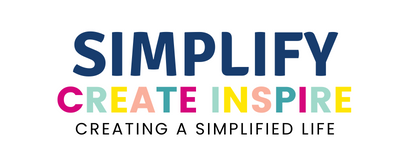Sensory activities are a great way to help stimulate and support the development of your toddler or infant. Each sense is important for early childhood development, so it’s important to provide opportunities for exploration and play.
Get inspired with some of the best sensory activities for toddlers and infants and many fun ideas that older children will also enjoy.
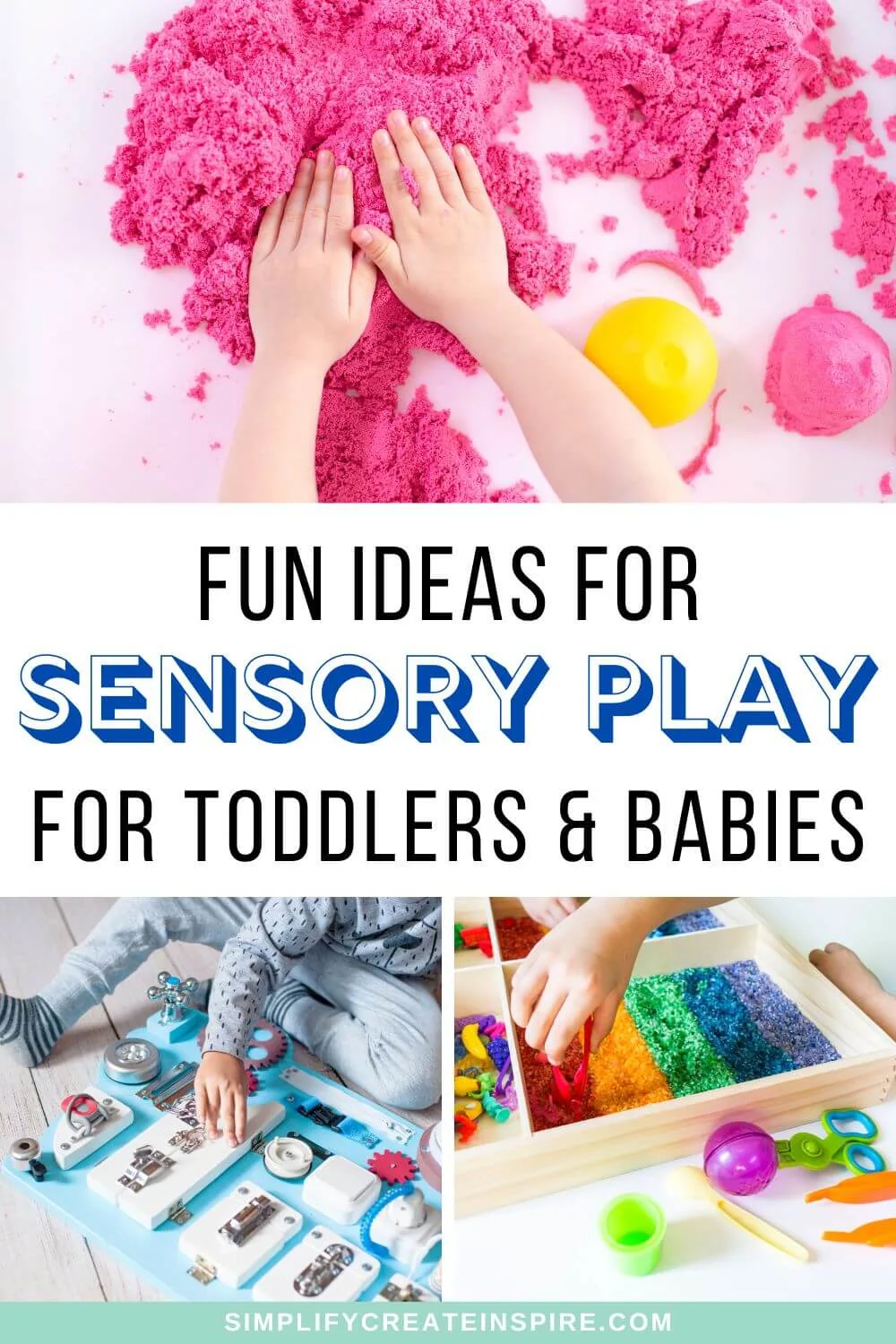
What Is Sensory Play?
Sensory play is any activity that engages the senses, including sight, smell, sound, touch and taste.
Sensory play is often referred to as “messy play” because it can involve using materials like sand, water, paint and clay. But not all sensory play is messy.
The Benefits Of Sensory Play For Infants & Toddlers
Sensory activities are important for all children, but they are especially beneficial for infants and toddlers because they are just beginning to learn about the world around them.
There are so many benefits for both physical and cognitive development in children.
Sensory play helps children and babies to:
- Develop fine motor skills
- Explore their sense of smell, touch, taste, sight and hearing
- Express their emotions
- Enhance creativity and imagination
- Improve cognitive skills and problem-solving ability
- Develop language skills
- Promotes healthy brain development and sensory processing
Sensory Activities For Toddlers & Preschoolers
There are some wonderful sensory activities for older children aged 1 year and into the preschool and early education years. Many of the activities that a toddler will enjoy are equally as fun for a preschool-aged child.
It is essential to have proper adult supervision with each of these activities, especially if playing with younger children aged 1 to 3 years who like to put things in their mouths. You might choose to save some of these activities for when they are less inclined towards this habit.
Playdough
Playdough is great for toddlers. It’s squishy, pliable, and has a unique smell. Plus, you can make it yourself at home using one of these easy homemade playdough recipes.
Best of all, many of these homemade playdough recipes are also edible!
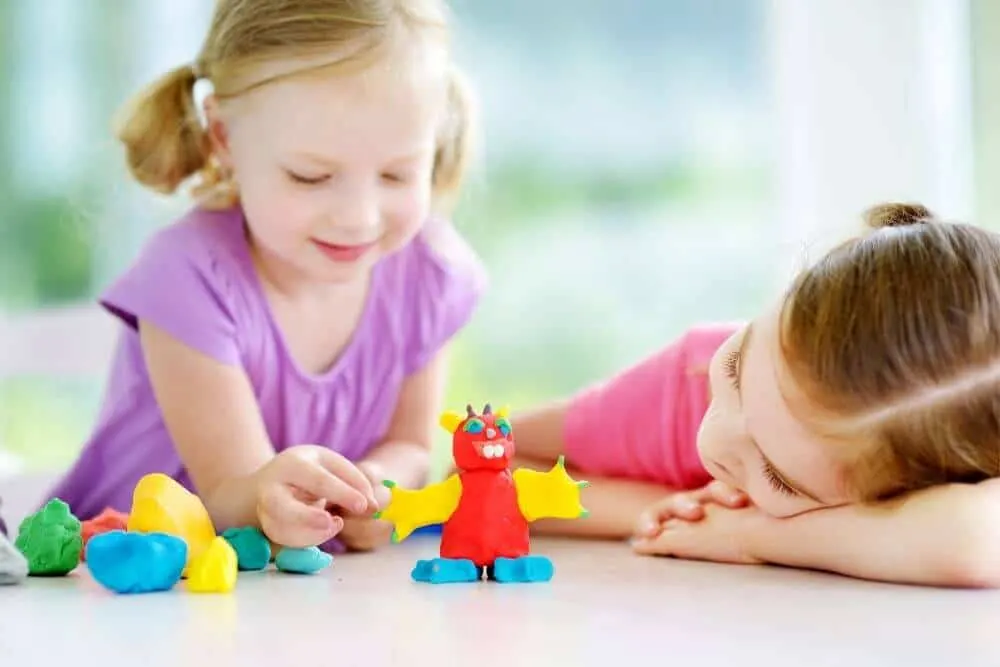
A great way to play with playdough with your toddler or child is to sit down and play alongside them. Show them how to mould it. Squeeze it between your fingers. Make shapes with various tools. Use cookie cutters. Then show them how it all goes back into a ball at the end, as a fresh slate to start creating again.
Playdough is great for strengthening small hands to develop fine motor skills and for learning basic skills such as colours and shapes.
Water play
Water Play is also an incredible sensory play idea for children and one that requires little to set up.
You can simply fill a bowl with water and add some water-safe toys and containers, or consider some of these alternative water play activities for kids and families.
A water table is a great addition to your child’s backyard play area and makes it a safe option for water play.
Finger Painting
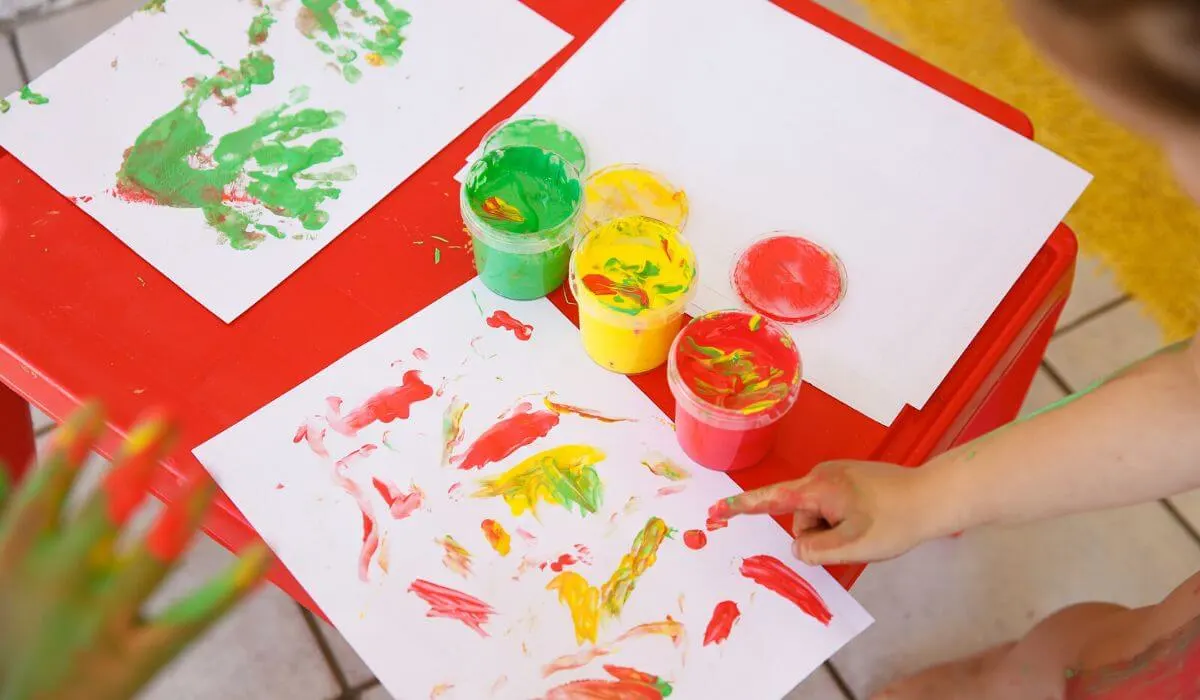
Finger paint is another great hands-on activity that teaches toddlers how to experiment with colour and colour mixing. With finger paint, they don’t need to have the coordination of a paintbrush and can just have fun with the sensations of making their own art.
Have them experiment by finger painting on other surfaces – A window, the high chair tray, or in the bathtub where it can be washed away after play.
You can also bring in different textures for them to paint on and use to make shapes on their paper, such as bubble wrap, leaves and flowers, and of course, paintbrushes.
More Ideas: Messy High Chair Play
Pipe Cleaners
Young children can find lots of entertainment from a pack of pipe cleaners. Pull out a colander from the cupboard with small holes in it or make holes in a container lid so they can practice their fine motor skills by inserting the pipe cleaners or weaving them between holes.
Let them experiment with making shapes, twisting multiple pipe cleaners together and enjoying the sensation of the wire combined with the fluffy texture.
Fake Snow Play
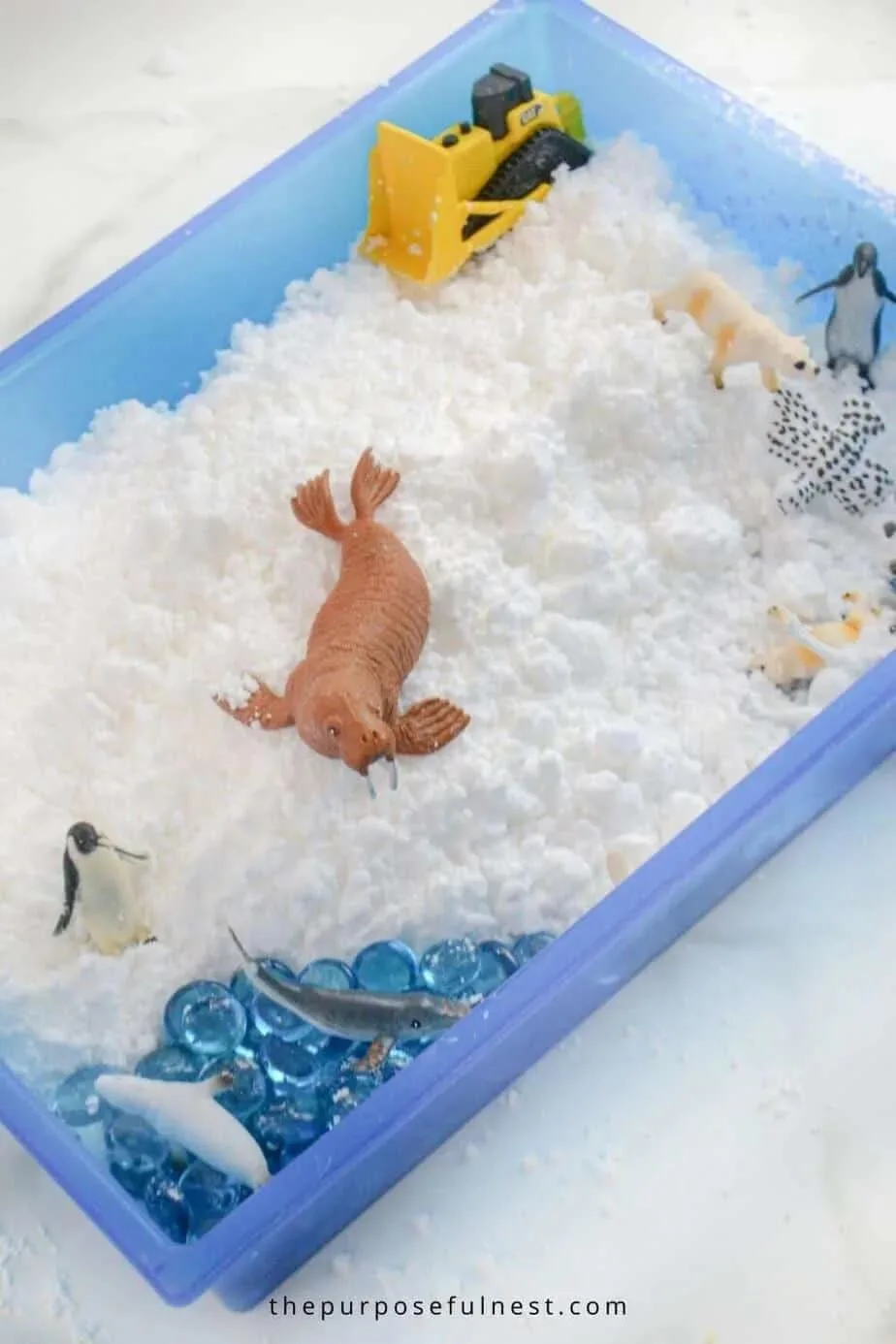
If you don’t live somewhere that gets snow, this fake snow sensory activity is a great way to bring the experience indoors. It feels very realistic and kids can make their own mini snowman.
Boxes
We all know kids love boxes. Sometimes even more than the things that come in them. Even small boxes are great for kids’ entertainment and learning. Find a variety of box sizes for them to play with. Nesting boxes are ideal or anything with varying sizes really.
Pom Poms
Pom-poms not only feel lovely but are fantastic for learning colours. Use a muffin tray, ice cube trays or a range of little bowls and show your child how to sort the pom poms by colour into the different dividers.
They can sort by hand or alternate by using tweezers, tongs or spoons. This will help strengthen their hands and develop their coordination skills.
Another fantastic fun pom pom play idea is to have long cardboard tubing, like the insert of a gift wrap roll. They can insert the pom poms into the top of the tube and watch them come out the other end. Basic physics skills for your child are an extra bonus!
Threading Beads
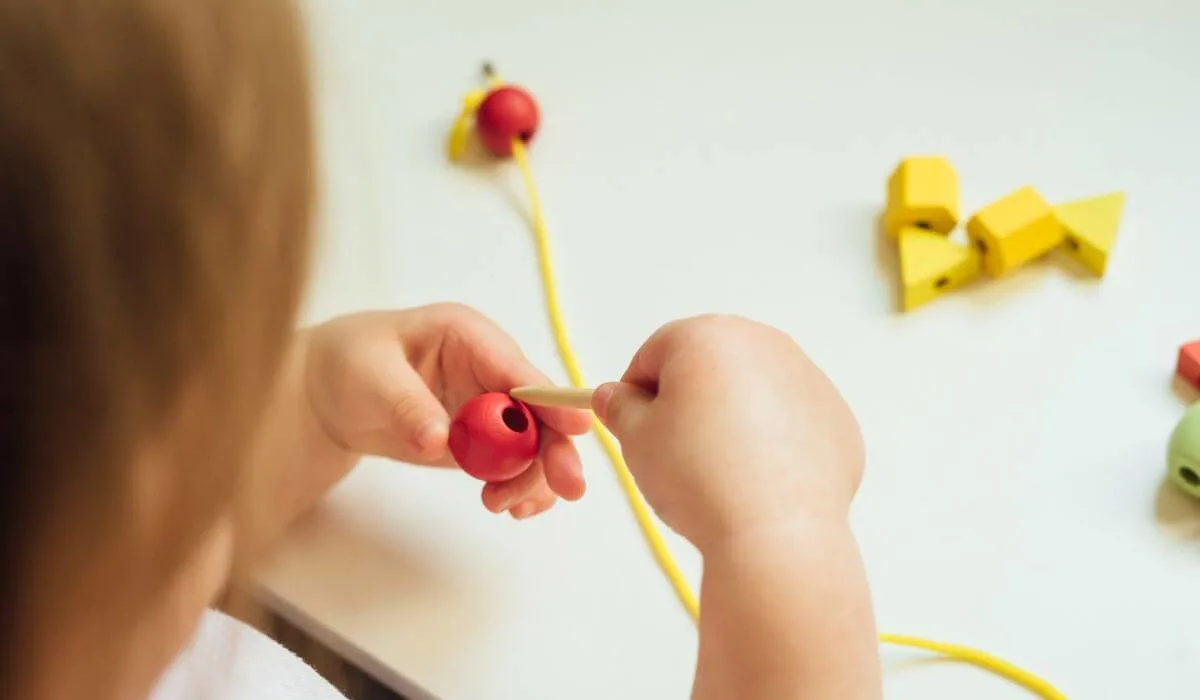
Have your child practice their coordination by threading beads on thick twine or shoelaces. You can also get weaving kits suited to toddlers.
Ice Cubes
For a variation of water play, add some ice cubes to a bowl or on a flat surface and let your child play with them as they like. They can pick them up and watch as the ice begins to melt or notice the cold sensation when holding the ice becomes uncomfortable.
You can also try freezing some plastic toys inside a tub of water and giving your child a spoon to hammer away at the large cube of ice so they can get to their prize in the centre.
Autumn Sensory Play
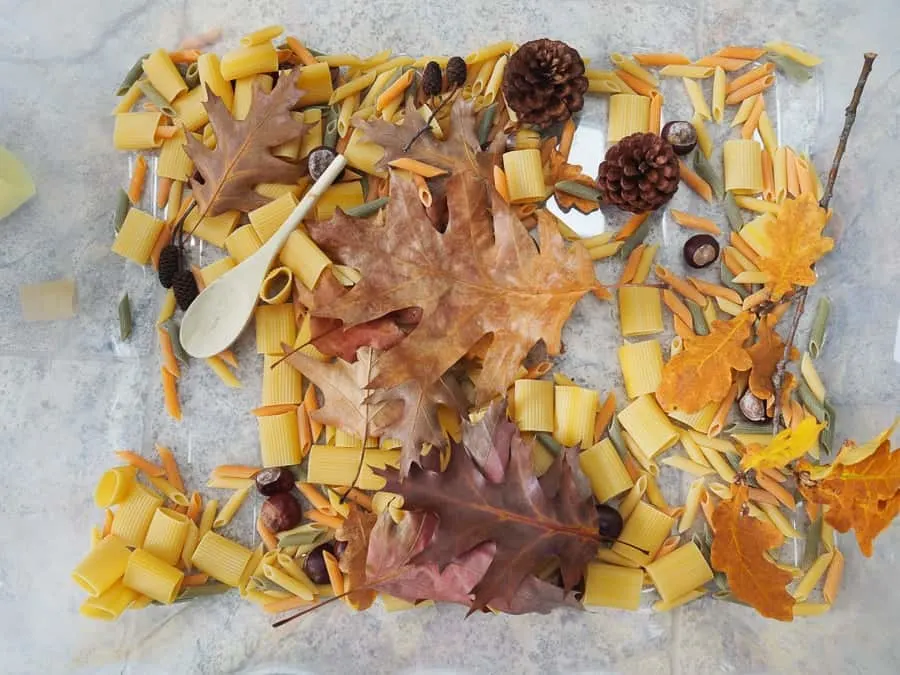
This Autumn sensory play activity is a great way to learn about the seasons, making use of autumn leaves and nature play.
Water Beads
Water beads are an incredible sensory experience for kids of all ages, and they offer a wide variety of ways to play. They can be incorporated into water or dry sensory tables.
Many kids love the texture and sensation of squeezing the beads. Take care though as they are not safe to be ingested.
Slime
While you will need to ensure supervision with slime play, unless you are using an edible slime recipe, this is a great sensory activity for kids of all ages.
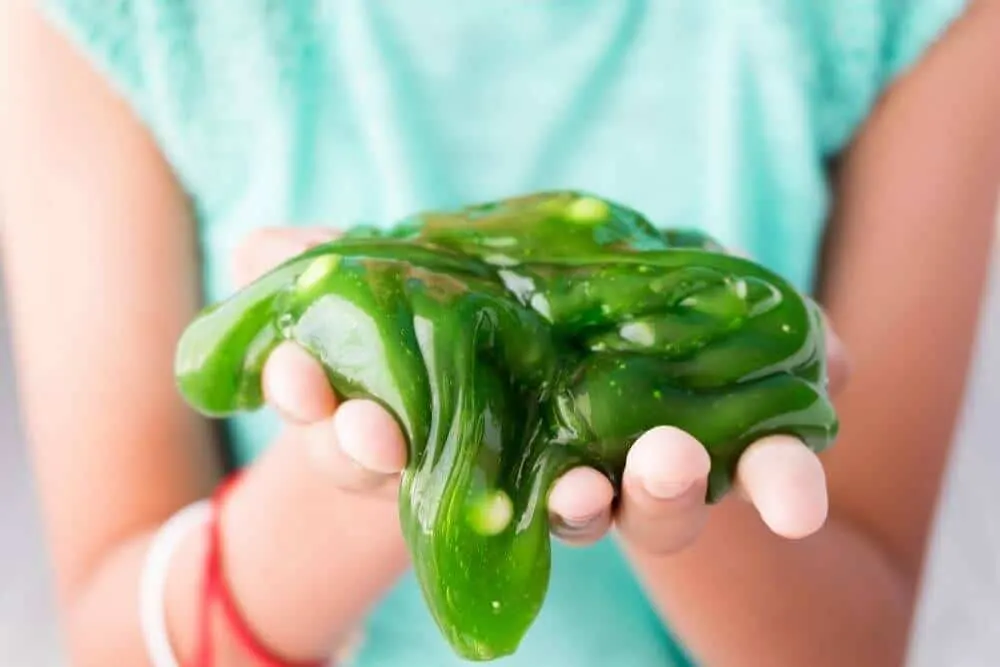
Toddlers will love the squishy, soft texture and likely love the funny noises it makes even more.
Encourage them to stretch and shape, poke and pour to watch what the slime does in response to their exploring.
Sand
Kids love playing in the sand, either at the beach, in a sandpit or in a sensory bin. The sensations of soft, dry sand can be very calming for kids.
Or mix in some water and use a sand play set to build sandcastles.
There are endless ways to play with sand and it’s easy to find sensory activities that combine sand with other materials like water, rocks, shells, and more.
Chickpea Foam
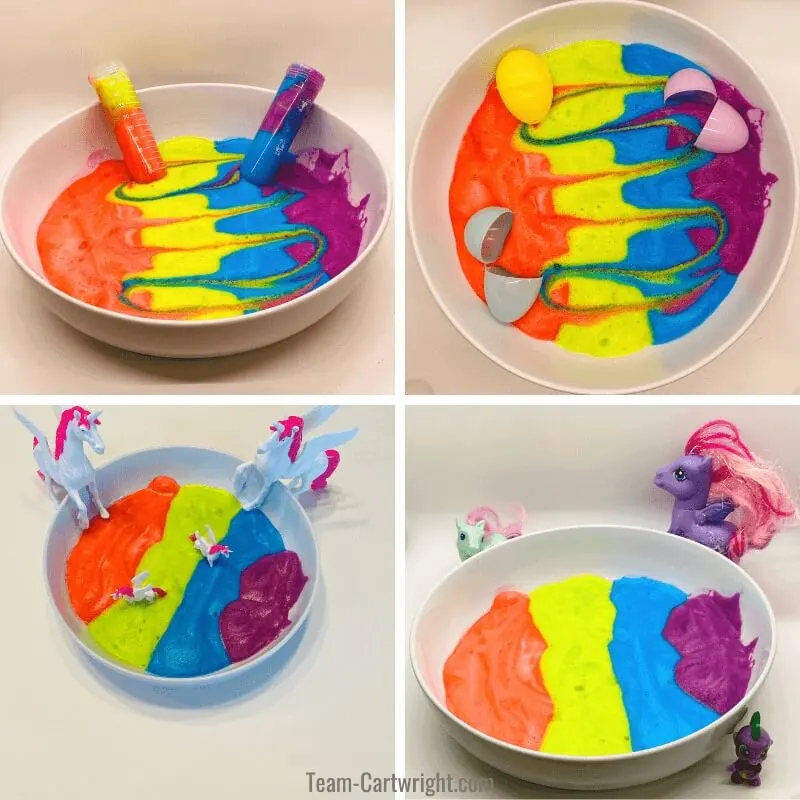
Make your own taste safe chickpea foam for kids to play with. A simple sensory recipe you can make in your kitchen easily.
Shaving Cream
This is definitely one for the messy play fans!
Shaving cream offers a lovely soft, fluffy sensation for kids to explore. Spray some into kids’ hands and let them squish it or rub it into a sheet of paper.
Squirt it onto a mirror or window, or into an empty bathtub and let your child draw pictures with their fingers. The sky’s the limit when it comes to shaving cream sensory play.
Kinetic Sand
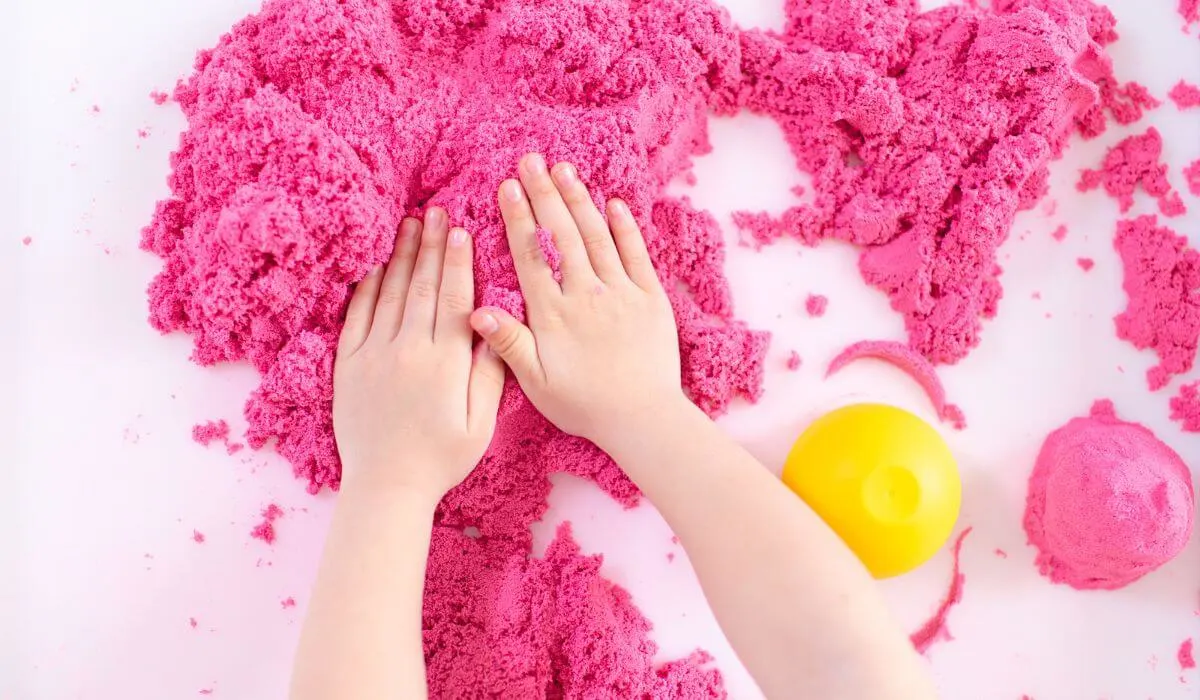
If you haven’t already tried kinetic sand (sometimes called moon sand), it is definitely worth checking out. It has a unique texture that is both soft and crumbly like traditional sand but can be moulded together without needing water.
Toddlers will love the sensation of running their fingers through it, shaping it into towers and generally exploring all the different ways they can interact with it.
Obstacle Course
For an active way of engaging the senses, set up a simple obstacle course for your child indoors or in the backyard. It might be as simple as having them crawl under a table, throw a ball and circle around a chair.
You can make it as easy or challenging as you like, depending on your child’s age and ability. And if they need help getting started, you can join in the fun too by showing them what to do and having them follow along!
Colour Wheel Sensory Play
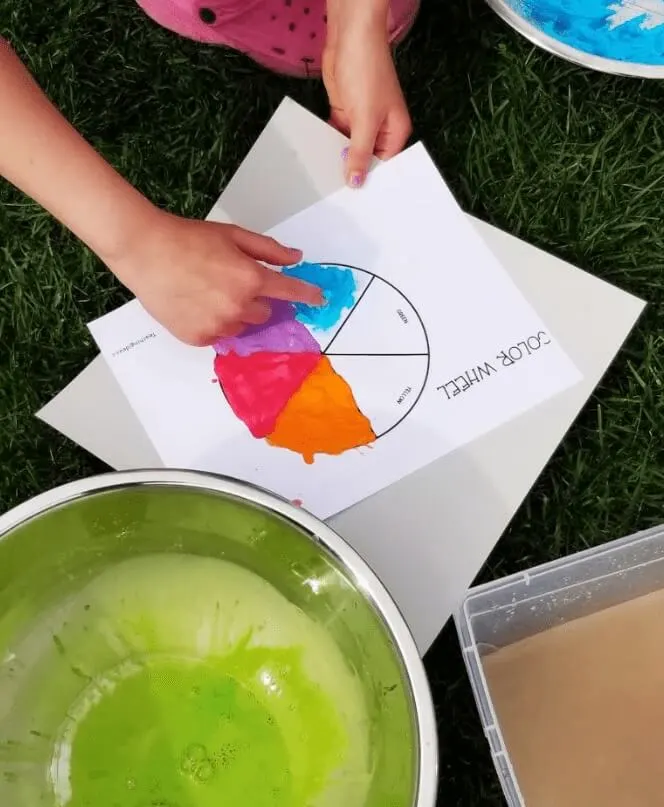
Teach your kids about colour through this sensory activity that includes a free colour wheel printable.
Cloud Dough
Cloud dough is an incredibly simple sensory activity that has a sensation that is between playdough and shaving cream.
You can buy cloud dough or make it at home and let the kids experiment with the delightful soft sensation of moulding and shaping the soft cloud-like dough.
Salt Writing
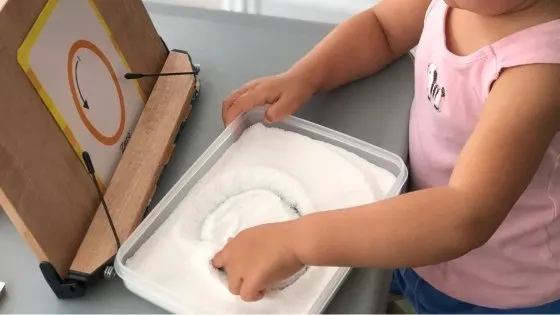
Teach letters and numbers through salt sensory play. This is such an easy activity to set up.
Blow Bubbles
Kids love catching and popping bubbles. It’s a great way to get them moving and work on their gross motor skills.
Let the kids experiment with blowing bubbles of their own, as they learn the right amount of breath needed to make the best bubbles or when too much breath makes them pop.
You can also fill a tub of water with a non-toxic bubble mixture or dishwashing liquid and use straws to blow bubbles in the tub.
Rainbow Rice
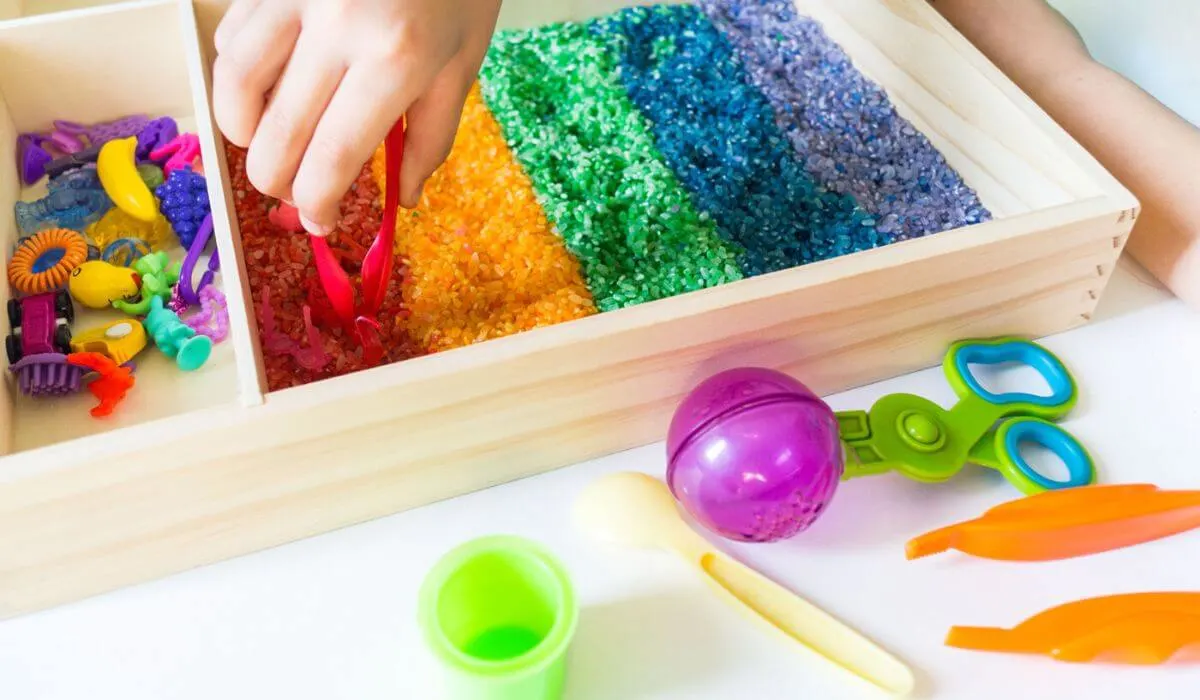
This is a super simple way to add some extra sensory fun to uncooked rice.
Use food colouring to transform your plain rice into a rainbow of colours and mix them into a tub with small containers, funnels, spoons and other different objects your child or toddler can use to play with.
Even mum or dad might enjoy that relaxing sensation of burying their hands into the cold, smooth rice and allowing it to fall between their fingers. Best of all – it’s completely taste-safe!
Kitchen Instruments
Give your child free reign to make lots of noise by setting up some upside-down pots and pans and giving them some kitchen utensils such as a wooden spoon to see what sounds they can make.
This is a great way for them to learn and explore sound as part of their sensory development.
Ball Painting
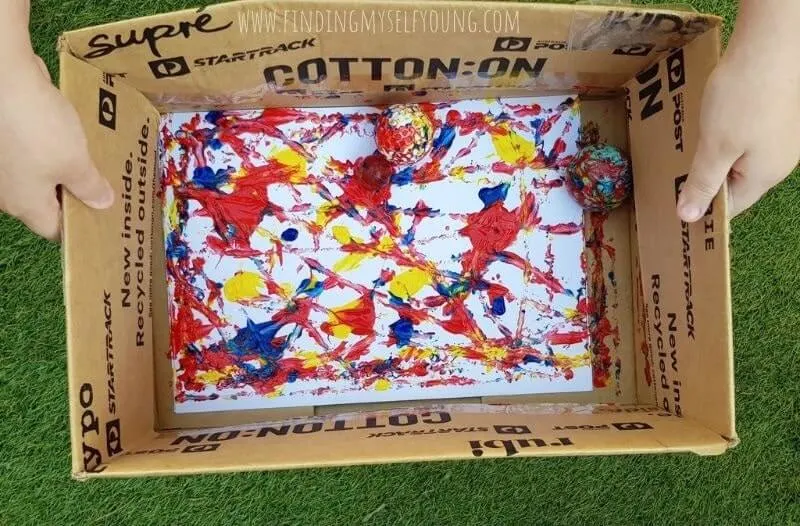
We mentioned finger painting and painting with other textures using hands but what about ball painting inside a box?
This is a great way to keep the painting fun a little more contained and the different size balls rolling around inside the box create some really cool artwork your child will be proud of.
Sensory Bin Ideas
A sensory bin is a box or container, often with a lid, that is filled with materials for children to explore.
The possibilities are endless when it comes to what you can put in sensory bins. Once you have a suitable container to use, you can fill your sensory bin with whatever you like. There are also some great sensory play tables that have built-in sensory bins.
You can add a variety of household items that you already have as part of your child’s imaginative playtime.
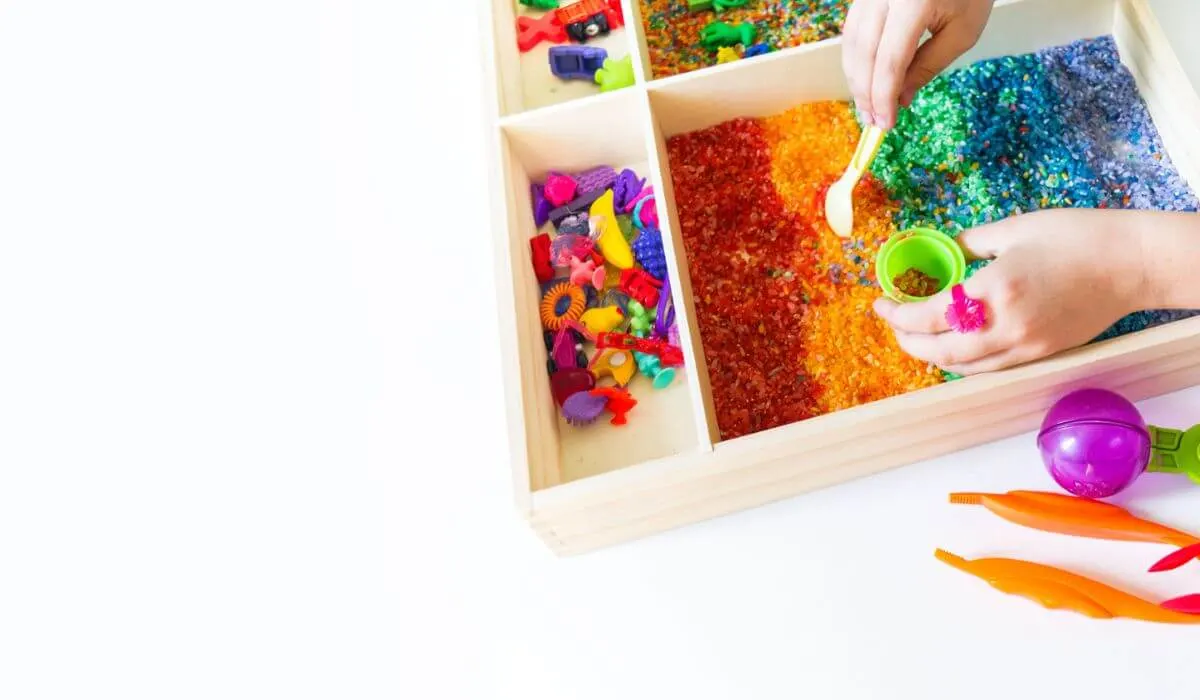
Here are some ideas for things to put in a sensory bin:
- Water beads or marbles
- Lunar sand
- Kinetic sand
- Coloured rice, pasta or lentils
- Popcorn kernels
- Buttons
- Pom poms
- Sequins
- Soapy water
- Hair gel
- Cotton balls
- Dry pasta
- Cold spaghetti
- Feathers
- Rubber bands
- Small balls
- Blocks
Themed Sensory Bin Ideas
The best thing about creating your own sensory bins is that you can create one with any theme you can think of and it is not only a fun play activity for your child but also a special way for them to learn about the world.
It can also help with language development and social interaction if you play together.
Here are some great sensory play activities to try:
Dinosaur Egg Small World Play
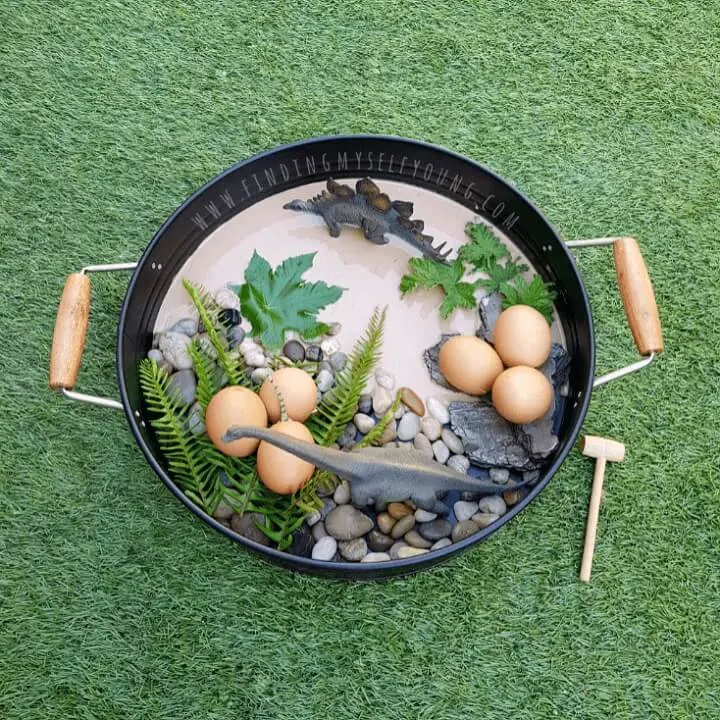
This dinosaur sensory tray incorporates nature, eggs and dinosaur toys in a fun small-world scene that is sure to inspire your child’s imagination.
Book-Inspired Sensory Bin
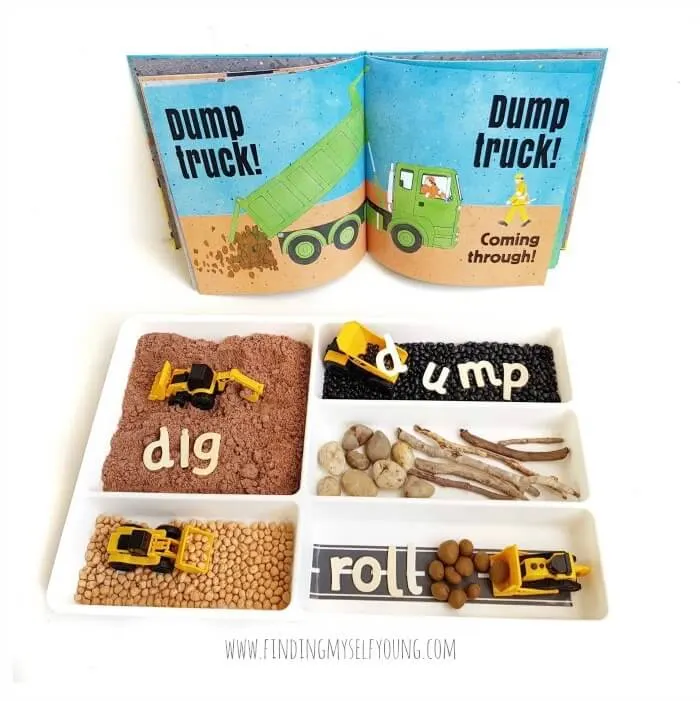
Why not introduce a new book to your child along with a sensory bin themed around the story? This is a wonderful idea, just like this cool Dig, Dump, Roll play tray. The best part – most of the items are taste-safe, including the homemade edible dirt!
Arctic Sensory Bin
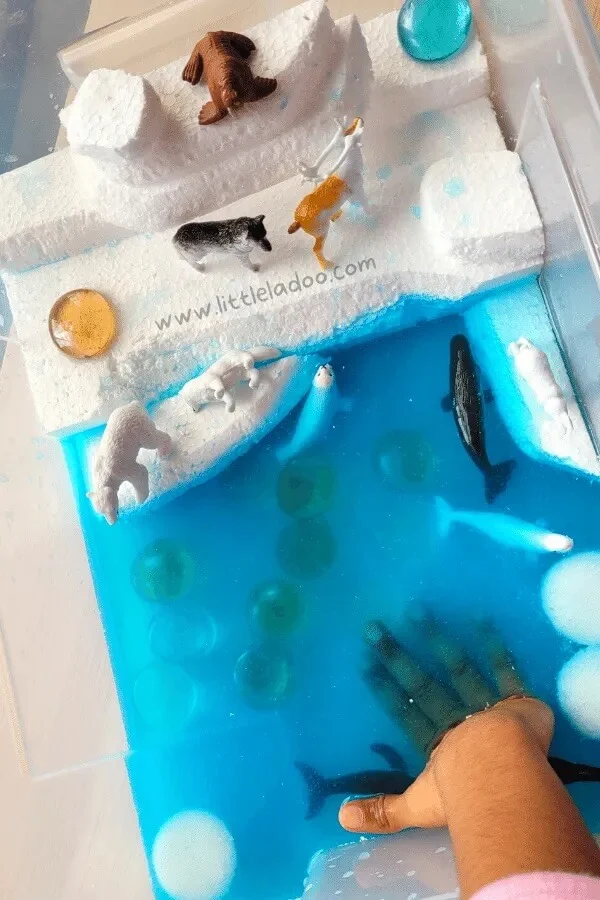
Incorporate fake snow from recycled styrofoam and blue food colouring for the water, along with some arctic animals for this fun arctic sensory tub.
Australia Sensory Bin
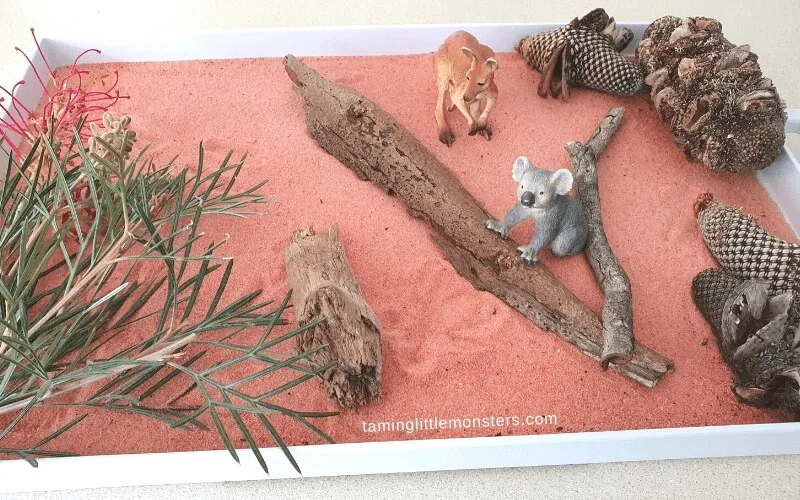
Teach your child about Australian wildlife with this cute Australian-themed sensory play idea.
Sensory Table Ideas
A sensory table is a great way to give toddlers the opportunity to explore different materials and sensations.
Sensory tables are often used in classrooms and childcare centres but you can easily set one up at home using a small child’s table or a low coffee table.
Fill your table with whatever materials you like. It might be little tubs of different materials that kids can touch and feel, such as feathers, pom poms, squishy stress balls, fidget toys or other little toys such as toy cars they can roll.
You can also create a messy play sensory table with playdough, paint or other different textures they can create with.
Sensory Bottles
A sensory bottle is a clear bottle that is filled with materials such as water, glitter, sequins or even rice, that can be used to stimulate the senses. You can use any empty water bottle but ideally use empty bottles that won’t be so likely to crack if dropped.
Sensory bottles are often used with babies and young children as they are a great way to provide visual stimulation and help them focus.
They can be focused on visual sensory play or you can make a dry sensory bottle with a mix of items such as rice or rocks that will make noise if it is shaken.
You can make your own sensory bottles at home by putting things inside that will fit through the opening. Make sure to secure the lid so that it cannot be opened by your child to ensure it is a safe sensory play toy.
Here are some cool DIY sensory bottles for toddlers:
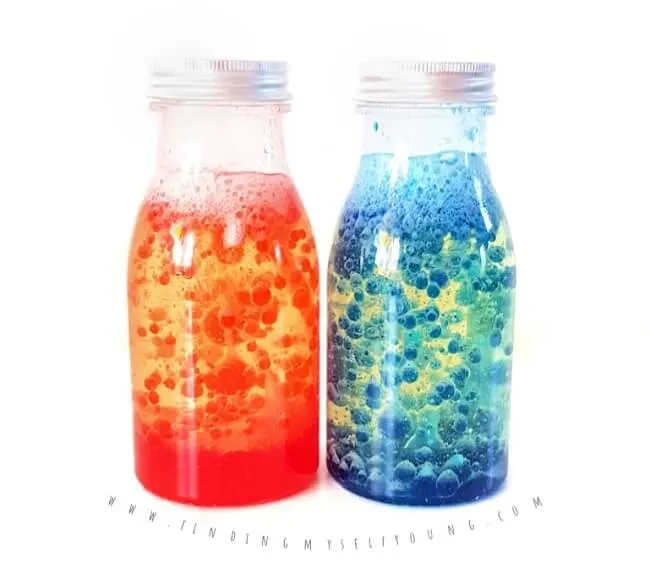
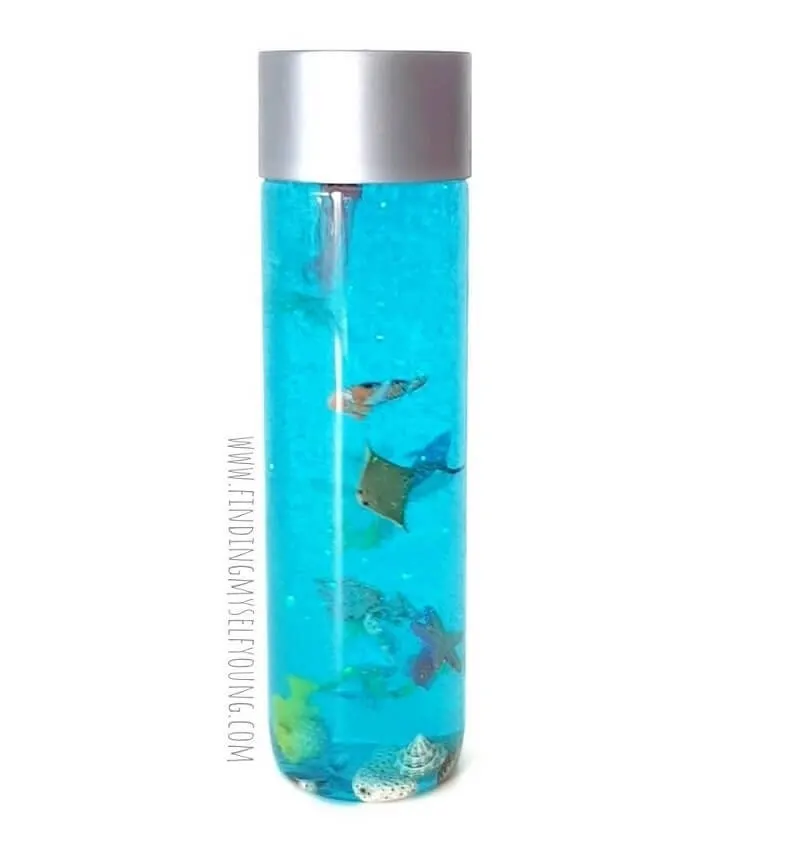
Make your own toddler-safe lava lamp sensory bottle or a coral reef sensory bottle with tropical fish and shells, both from Toni at Finding Myself Young. She has loads of other great sensory play ideas too!
Sensory Bags
A sensory bag is a bag that is filled with materials that can stimulate the senses.
Sensory bags can be a fun sensory activity for babies as well as older children. They lead to safe exploration and discovery at your child’s own pace.
If making a sensory bag for a baby, make sure you choose a soft, cloth bag that has no choking hazards like ribbons hanging from it. Inside, place items that are safe for them to play with and put in their mouth since babies often like to discover through taste.
Some great options are rattles and baby toys, fabric in different textures and sizes, balls, sealed containers filled with dry rice that makes a noise, wooden spoons or plastic containers and anything else you think they will safely enjoy exploring.
If you are doing the sensory play with an infant that is under 6 months, they won’t yet be able to take items out themselves so you can instead place things in their hands or stroke their skin with soft fabrics.
RELATED READING: Messy play ideas for kids
Sensory Books
As a kid, my favourite picture books were the sensory books, with little flaps that revealed secrets, different textures and fabrics. My kids loved them too and we still have a few of those sensory books on our shelves even though they are a little too old for them now.
Sensory books are a great way to engage your child’s senses and they can be used with toddlers and older kids too. They are a great way to encourage a love of reading from an early age.
There are lots of different types of sensory books available, from lift-the-flap books to books with different textures, to books that make sounds. You can even make your own sensory books at home.
Here are some of our favourite sensory books for toddlers & kids:
Sensory Board
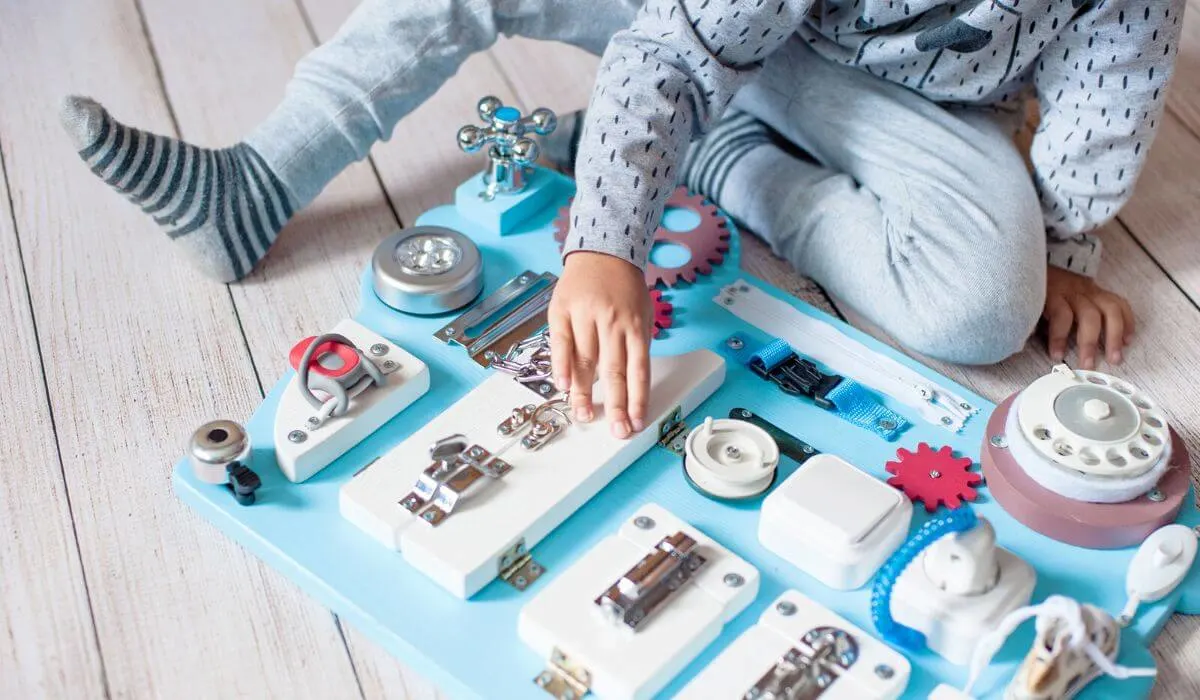
A sensory board is a board with different materials attached to it that can be used for sensory play. They are often used in classrooms and childcare centres but you can easily make your own at home.
You can use anything to make a sensory board, from an old picture frame, door knobs, lids, light switches, latches or anything else you can think of.
Attach different materials to your board such as fabric, ribbons, buttons, beads, feathers or anything else that will stimulate the senses.
You can even add some features that make noise such as a bicycle bell or textures that make noise when you drag something across them. Or you can get pre-made sensory boards too.
Sensory Activities For Babies
You might be thinking babies are too young to engage in sensory activities, but that’s not the case! There are lots of different sensory activities that you can do with your baby to help support their cognitive development.

Here are some sensory activities for babies:
- Baby Massage – Infant massage is a great way to bond with them and it has lots of benefits for their development. It can help to improve their circulation, digestion and sleeping patterns, as well as to help them to explore how their body feels through touch.
- Smiling faces – Show your baby photos of smiling faces, such as family photos so they can learn to associate smiling with joy and feeling safe.
- Mirrors – Much like smiling photos, showing your baby their reflection in the mirror alongside yours is a fun way to help them develop self-awareness.
- Tummy time – Tummy time is important for babies as it helps to strengthen their neck and back muscles. It also gives them the opportunity to explore their environment using their senses. There are lots of different ways you can make tummy time more enjoyable for your baby by using sensory activities.
- Music – Allow your baby to experience music, both with vocals and without, exposing them to different types of music for audio-sensory stimulation. Singing to your baby is also a wonderful way to do this.
- Hanging mobile – Hang a mobile above your baby’s crib to give them something to look at when alert in their cot. Some of them have the option to wind and play music too.
- Rattles and baby toys – There are lots of different sensory toys available for babies, from rattles to teethers, toys that clip on strollers and more. Choose ones that have different textures, patterns and sounds to stimulate your baby’s senses.
- Water play – Bathtime is great for babies as it helps to stimulate their senses. You can trickle water over their skin and allow them to feel the sensations or hand them a wet washcloth to suck on and squeeze.
Sensory activities are a great way to encourage your child’s development. They can be used with toddlers and older kids, as well as ways to add sensory activities to baby play time with your infant. These sensory activities for toddlers and infants will support sensory development during their early learning.
Do you have any other sensory activity ideas to share?
Want more fun ideas for keeping the kids busy?
- LEGO building and learning activities
- Tech-free family fun
- Messy play recipes
- Classic board games to play as a family
- School holidays bucket list
- Homemade slime recipes
- Homemade play dough recipes
- Fun activities to do in your backyard
- Fun activities to do at home
- Water play activities for kids
- Creative activities for toddlers
- Things you need for a baby’s first 3 months
- Screen-free family activities at home
